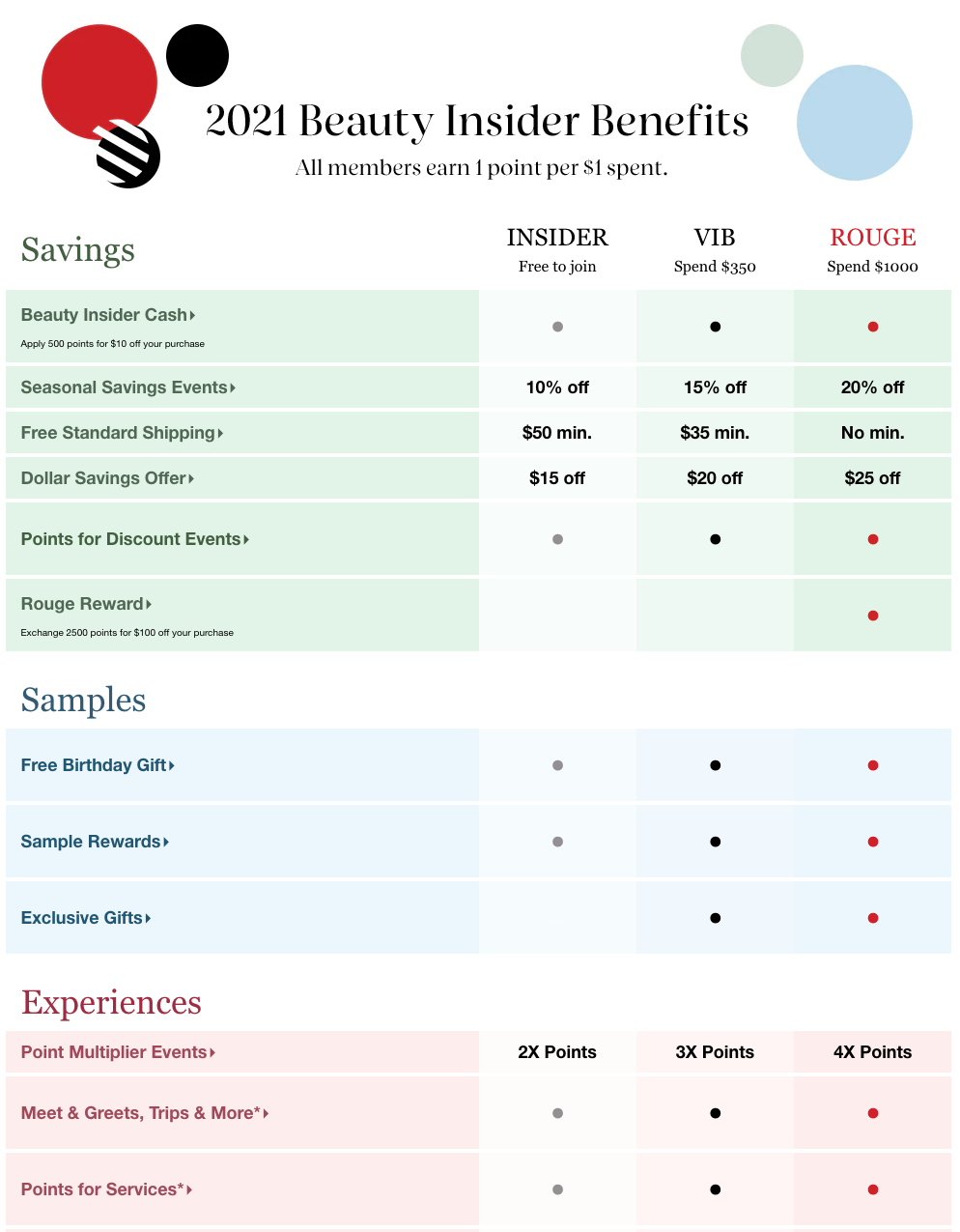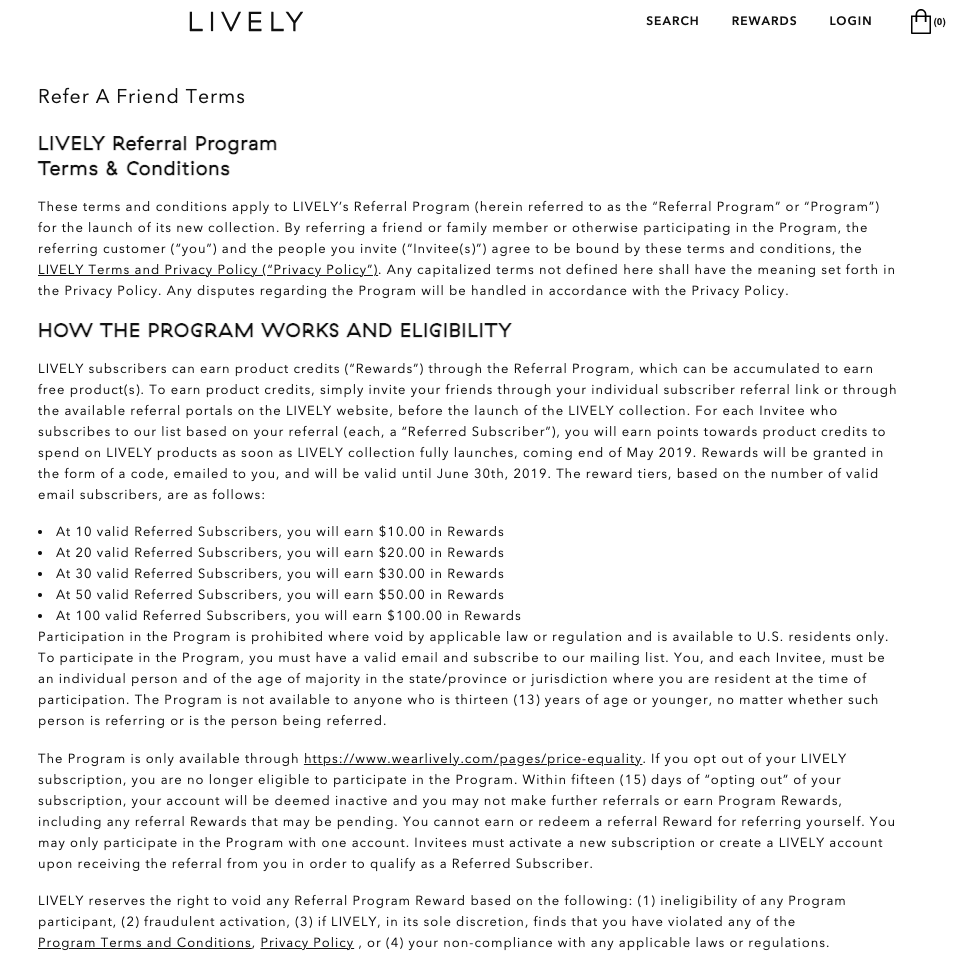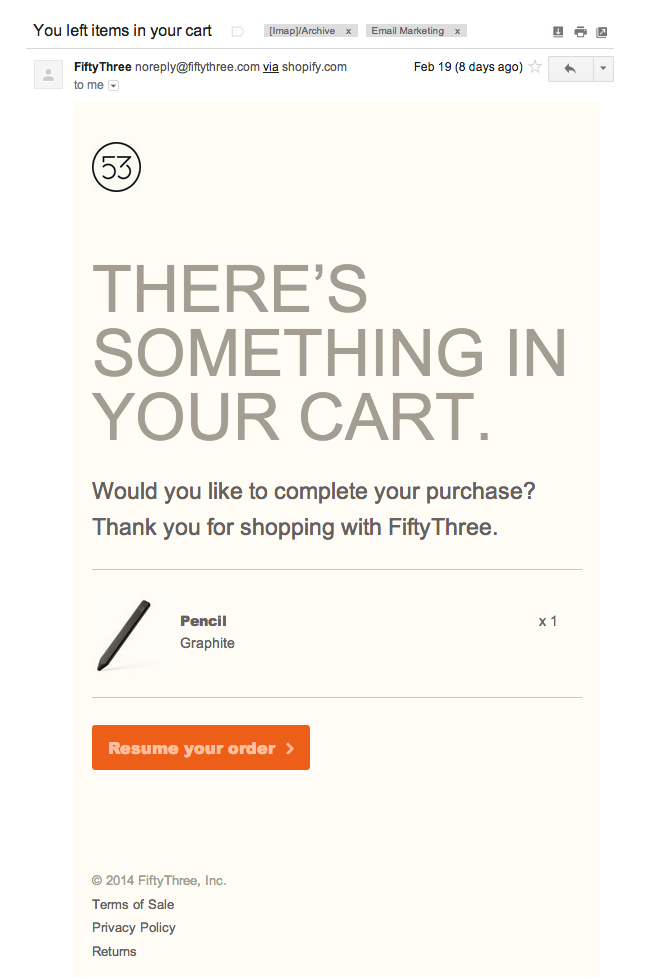Coming up with a discount strategy in retail is one of the most common approaches for increasing sales. But just because discount promotions are popular doesn’t mean they’re always effective.
Lowering your prices might bring in customers, but if you don’t execute your retail discounts properly, you could cut into your profits and even damage your brand and reputation.
It’s important to weigh all the pros and the cons of implementing a discount strategy in retail and to define your goals and actions.
Here are some tips to help get you on your way.
What is a discount strategy in retail?
A discount strategy in retail is used to decrease the price of specific products for a set amount of time. In some cases, retailers offer a store-wide discount to move excess inventory and create space for new collections.
Retailers usually run discounts to attract new customers, increase sales, and clear out old inventory.
Large retailers have an easier time selling low-priced merchandise in high volumes, but this strategy doesn’t always work for small to mid-sized retail boutiques.
With discounting in retail, it’s important to keep an eye on your profit margins and break-even point, avoid conditioning customers to wait for a sale, and understand exactly why and when you want to discount products.
12 discount strategies in retail to try in your store
Once you’ve decided why you want to discount certain products and what you’re hoping to achieve, choose the discount method that works best based on your objectives.
Here are a few retail discount methods to try:
1. Offer special discounts to first-time customers
Offer new customers a small discount to move them through the sales funnel and convert them from browsing to paying customers. You can do this in-store with 10% off their first purchase. It’s also common to see this online in exchange for a visitor’s email address.
2. Build a customer loyalty program
Build a rewards program for loyal customers to increase customer lifetime value (CLV). CLV is the total amount of money a person spends at your retail store during their lifetime as a customer.
Loyalty programs also let you personalize rewards based on your members’ prior shopping behavior.

Example loyalty program: Sephora's Beauty Insider program
3. Create early-bird discounts on new products or pre-orders
Offer limited-time discounts on new arrivals or pre-orders.
This can help you sell through some inventory before it’s even on your floor.
Use this strategy for your entire customer base or pick specific segments, such as people who are part of your loyalty program. You can also use it to re-engage shoppers who, for example, haven’t made a purchase in the past three months.
4. Launch a retail referral program
People trust products that their friends tell them about. In fact, when referred by a friend, customers are four times more likely to make a purchase, and customers acquired through referrals have a 37% higher retention rate.
An example of a retail referral discount is inviting an existing customer to refer a friend and get 20% off their next in-store purchase. Plus, their friend will get 20% off their first purchase.

Image: An overview of Lively's "Refer a Friend" program
5. Implement personalized offers
Use personalized offers to retarget past and present customers based on their buying behavior or personal details.
For example, reward frequent shoppers with an occasional discount on products similar to items they’ve purchased in the past. Ask people for their birthday at the checkout counter and send them a personalized discount offer on their special day.
Both of these offers can be sent via email when the time is right.
6. Post event promos
After hosting a pop-up event (or any type of event) at your retail store, follow up with attendees via email. Thank them for attending, and give them a discount to incentivize them to come back and buy from you.
7. Time-sensitive discounts
Limited-time discounts encourage customers to pull the trigger quickly.
Promos with expiration dates or limitations create a sense of urgency, and shoppers won’t want to miss out.
Make the offer available only to the first 10 customers who redeem it, or include an expiration date. This could be a one-day sale or an exact time and date (in the near future) that the offer ends.
8. Collaborative discount partnerships
Round up a few of your local retail shops to offer a collaborative discount to customers in your area. For example, if you have an activewear boutique and the retail boutique near you sells flowers and home products, work together to create a neighborhood discount package.
It could look something like this: “Buy a pair of leggings, a dozen tulips, and a throw blanket, and get 10% off your next purchase from each store.” You’d have to carefully monitor this and create a system to keep track of customers who participate in the event.
9. Bundled discounts
Lower the price of a group of items bought together as opposed to lowering the price on just one product or service. These bundling discounts can help you increase your average transaction size because you’ll be selling several items within a single order.
With each sale in this scenario, more items are sold, more revenue is made per order, and costs per order are decreased.
This is also a chance to pair items that aren’t strong sellers with products that have proven themselves as bestsellers. Make sure you measure the sales of the less popular items to see if they increase after the discount, and consider bundling items that customers are already buying together or that can help solve a similar problem.
For example, group together a body wash with face lotion or a cookbook with local spices.

Image: Bundling example from LOVESEEN
10. Buy one, get one free (BOGO)
Sometimes a discount isn’t enough to attract more interest. Shoppers tend to see more benefits in “free” than in high quality items at a discounted price.
Buy one, get one free (also known as BOGO) is a proven sales strategy that creates a sense of urgency and encourages customers to buy.
Why? It’s easier to do the math on “free” than it is to work out a percentage.
BOGO is great for attracting impulse buys, moving inventory, and acquiring new customers, but you can also offer a free gift with a full-price purchase.
Try offering a popular high-margin product with a freebie that’s less expensive but hasn’t sold well, or even offer free shipping for your online customers or customers who buy in store, ship to home (if you offer that option).
For example, maybe there’s a scent of lotion that hasn’t been flying off the shelves. If you offer it as a free gift with the purchase of a more expensive, more popular face wash, you’re moving twice the inventory and getting a higher sale.
11. Conditional promos
If you’re looking to implement discounts while protecting your margins, conditional programs are a good choice. Instead of running a straight deal like “$5 off any purchase” or “15% off all items,” set limitations or conditions that shoppers need to meet in order to redeem the offer: “Buy 10 items and receive 20% off.”
You can also use this strategy without putting the first item on sale. For example: “This month, buy one pair of jeans at the full price of $60 and each additional pair is just $50.”
Other conditional promotions include seasonal or limited-time discounts, like the ones you often see in the lead up to Black Friday Cyber Monday.
12. Win back abandoned carts
The average online shopping cart abandonment rate is 69.8%. If you also have an ecommerce store, win back sales by offering a discount after a shopper abandons their cart.
Create a pop-up that appears when the customer is leaving their cart and include discount details and a call to action (CTA) to complete the sale.
This method can lead to shoppers intentionally moving away from the cart page just to get a discount, so avoid using it too often.

Image: Abandoned cart email example from Fifty Three
The benefits of having a discount strategy in retail
Having the right discount strategy in retail is a low-risk way to drive more sales volume and bring in customers who have never tried your products or services before.
Aside from making your customers feel happy, when done right, retail discounting can benefit your business in various ways, including:
- Driving sales quickly and improving cash flow
- Attracting new customers
- Increasing sales revenue and profit
- Re-engaging past customers
- Getting rid of old product
“End of season sales are a great way to clear out inventory and still cover the cost of production,” says Shannon Ashford, founder of Tom Foolery. “We offer 20% to 30% off, sometimes even 40% if we really need to move inventory. This way production costs are covered and there are a few dollars to spare for shipping.”
“End of season sales are a great way to clear out inventory and still cover the cost of production.”
RECOMMENDED READING: Learn about how to leverage a customer’s order history to make more tailored recommendations and boost sales.
How the wrong discount strategy in retail can hurt your business
There is some inherent risk when offering a discount or retail markdown. Once customers have your product or service, they might feel like it’s lost its value.
Regular discounting can lower the perceived value and quality of your brand. That’s why some brands opt for a no-discount strategy. Discounting can also impact inventory accuracy if you’re using the retail inventory method.
“We stick to seasonal patterns—for us this means two sales per year,” says Shannon. “At Tom Foolery, we don’t like to offer sales too often, because customers start to expect it and will wait to purchase when the sale rolls around. Sticking to two sales a year also creates more hype and excitement—it becomes an event customers want to act on quickly.”
“We don’t like to offer sales too often because customers start to expect it and will wait to purchase when the sale rolls around.”
Let’s look at how retail discounting can be bad for business:
- It can dilute your brand
- Discounts can lower your profit margins
- Constant discounts are not sustainable for small businesses
- You can attract conditional shoppers instead of loyal customers
“No matter how badly you need to clear out inventory, don’t mark the price lower than the cost of production,” says Ashford. “Offering a quality product for less than it’s worth sets a bad precedent for the value of your product.”
“No matter how badly you need to clear out inventory, don’t mark the price lower than the cost of production.”
How to stay profitable when using a discount strategy in retail
After weighing the pros and the cons of implementing a discount strategy in retail, focus on your mission so you can remain profitable while offering a lower price. Different reasons call for different types of discounts, which is why you need to know your objectives. It’s important to calculate whether your discount will still allow you to be profitable.
Before you start testing different retail discount strategies, consider the following factors to stay profitable:
- Know why you’re discounting products, and set goals and objectives. What is your reason for discounting products? Do you want to reduce inventory, increase profit, attract new customers? Maybe it’s all of the above. Whatever the reason is, make sure to think it through and build a discount strategy to reach your goals.
- Build shopper segments and personalize offers accordingly. Segmentation isn’t only used in ecommerce. A surefire way to increase in-stores sales is to create offers and discounts based on your customers’ past shopping behaviors and preferences.
💡 PRO TIP: The Shopify POS app lets you sync customer profiles and collect contact details so you can send personalized marketing messages. It also has an integrated loyalty program so you can reward customers for shopping with you in-store.
- Make sure your margins are healthy. This calculator will help you determine selling prices for your products in order to save money and increase profits. In order to keep your margins healthy, it’s important to keep your marketing costs low. You need to promote your discount, but not at the literal expense of your profits.
-
Know your customer acquisition costs. It’s critical that you know how much you’re spending to get a new customer because that number will change when you offer discounted products or goods. Make sure you add your lost margins during the sale, as well as your additional marketing expenses.
- Look at your sales history. Before discounting products, take a look at their regular-price sales history. Review your profit on each unit sold at its regular retail price and how many units you typically sell in a specific time period. For example, in a week or a month.
- Be strategic about the timing of discounts. With special offers and discounts in retail, timing is equally as important as setting goals and being relevant. Promoting discounts at the right time leads to an increase in sales conversions.
- Test various discount strategies. Finding the right retail discounting method for your store doesn’t happen overnight. It requires trial and error and varies depending on your business, merchandise, and customer base. Test various retail discount strategies—one at a time—track if they are successful, and then focus on what works best.
Moving forward with a discount strategy for your retail store
The right discount strategy in retail can be a great way to bring in new customers, reward loyal customers, and move a lot of inventory in a short amount of time. You just have to have a strategic approach and know your goals in order to increase your sales and revenue.
Read more
- What is Cost of Goods Sold (COGS) and How Can I Calculate It?
- The Complete Guide to Market Research for Your Retail Business
- What Is Visual Merchandising? How to Leverage Product Displays For Your Retail Business
- Why Customer Loyalty is Important for Your Retail Business (+ 8 Ways to Strengthen It)
- How to Calculate Beginning Inventory & Give Stock a Dollar Value
- How to Boost Revenue and AOV with Post-Purchase Upsells
- Vision Board for Business: Use This Creative Tool to Accomplish Your New Year’s Resolutions
- Shoplifting: Why People Steal and How Retailers Can Prevent It
- 5 Ways Retailers Can Generate Revenue Outside of Business Hours
- What Is An Invoice? All You Need To Know To Get Paid (2024)
Discount strategy in retail FAQ
What is a discount strategy?
A discount strategy is a plan for how a business will provide discounts to its customers. This can include offering discounts for certain products, services, or customers, as well as providing discounts in certain situations.
What is a retail discounting model?
A retail discounting model is used by retail businesses to offer discounts to customers. It’s designed to incentivize potential customers to make their first purchase, and to encourage customers to return to the business in the future.
What are some examples of retail strategy?
Some examples of retail strategy include price discounts, coupons, loyalty programs, and in-store events.





